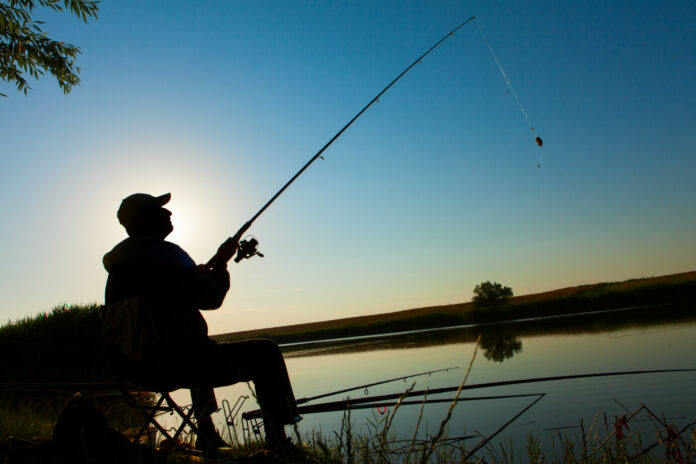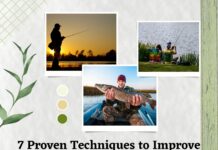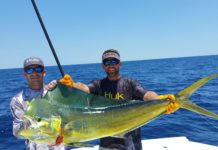Step into the world of Fiskning, where fishing is both traditional and environmentally friendly. Learn about the societal significance and long history of this practice that has been passed down from generation to generation. Come with us as we explore the depths of Fiskning, talking about its history, how it has changed over time, and how to have the best time possible. There’s something special about Fiskning that will hook you, whether you’ve fished before or are just starting out.
How do you Fisking?
Fiskning is a traditional Swedish way to fish that involves more than just getting fish. It includes a whole-person approach to fishing that values nature and the bond between the fisherman and the surroundings. The word “Fiskning” means “fishing” in English, but it has a deeper meaning that has to do with respecting the water and the creatures that live in it.
Fiskning puts a lot of stress on sustainability and doing the right thing so that people in the future can still enjoy the sea’s bounty. To have the least amount of effect on marine ecosystems, anglers often use methods that are good for the environment, like handlining or trolling.
This mindful attitude makes fishing different from other types of fishing because it encourages harmony between people and nature. It’s not just about catching a big fish; it’s also about getting lost in the ocean’s beat and recognizing its delicate balance.
The History of Fishing and Its Traditions
The Scandinavian art of fishing, called fiskning, has deep roots in the past and culture of the area. Fishing is more than just a way to catch fish; it’s a way of life that has been passed down from generation to generation.
Fiskning has been an important part of Nordic life for hundreds of years. Not only did people depend on the sea for food, but also for trade and staying alive during the hard winters. Fishing became a part of folklore and festivals, showing how important it was to the people who did it.
Fishing techniques in the past were simple but efficient. They used tools made by hand from natural materials. Early in the morning, fishermen would get out on their boats or stand by the calm shores of lakes and throw their lines into the clear water, enjoying the peace and quiet.
Finning is still done today, and those who do it still love the ritual that it brings. Even though technology changes and people become more aware of the environment, it is still important to keep the history and spirit of fishing alive so that future generations can enjoy and respect it.
Sustainability in fishing: why responsible behavior is important
It is very important to fish in a way that doesn’t harm marine environments or fish populations. To stop overfishing and protect vulnerable species, responsible behavior is essential. We can help keep the ecosystem in balance so that marine life can grow for future generations by fishing in a way that doesn’t harm the environment.
Respecting the catch limits set by government agencies is an important part of fishing responsibly. These limits are in place to keep our seas’ biodiversity and fish stocks from running out. Using selective gear that reduces bycatch also helps protect species that aren’t the goal, like sea turtles and dolphins.
If you buy seafood from approved sustainable sources, you’re supporting fisheries that care about the environment and treat their workers fairly. People who buy seafood from sustainable sources are a big part of getting more fishermen to use eco-friendly ways.
Being environmentally friendly when fishing not only helps the environment but also makes sure that future generations of fishers will have a stable way to make a living.
How technology plays a part in modern fishing
In modern Fiskning, technology is a key part of making things more efficient and long-lasting. Fish finders have changed the way fishermen find groups of fish, which saves them time and cuts down on bycatch. GPS systems help hunters find their way around the water more accurately, which helps them stay within the legal fishing limits.
Gear technology improvements, such as lighter poles and reels, make fishing more fun by making casting and reeling easier. Sonar technology helps hunters better understand the terrain below the water, which increases their chances of catching something. Additionally, digital planning tools give us useful information about how and why fish migrate.
Modern Fishing is open to new ideas while still honoring old ways of doing things. This keeps tradition and growth in balance. Fishermen can keep practicing the art of fishing while protecting marine areas for future generations by using technology in a smart way.
What Fiskning Means in Culture
There is a lot of traditional meaning behind fishing in many places where it’s not just a hobby but a way of life. The customs of fishing have been passed down from generation to generation and are full of history and folklore.
Fishing is more than just catching fish in these places; it’s a way for people to connect with their roots and make new friends and family. Fishing is a way to show strength, patience, and love for nature.
Before going out to sea, fishermen often do ceremonies or practices to ask the spirits to bless them with a good catch and a safe return. These traditions add an extra level of respect to the act of fiskning.
Also, traditional meals that use fish that was just caught are loved by everyone and bring families together around the dinner table. Traditions are kept alive and community ties are strengthened by telling stories and laughing over a meal made from the day’s catch.
Fishing is a part of Finnish culture that goes beyond just fishing. It represents values like survival, community, and keeping traditions alive so that future generations can enjoy them.
How to Have a Successful Fishing Trip
Starting a fishing trip can be fun, no matter how experienced you are or how new you are to the sport. To have a good fishing trip, you need to pick the right spot that fits your needs and the species you want to catch. You can greatly improve your chances of making memorable catches by researching the best places ahead of time.
Buy good fishing gear that is made for the species of fish you want to catch. With the right gear, you can not only do better, but it also protects and improves the sea environment. While you’re waiting for bites, be patient and aware. In fishing, slow and steady can win the game.
For sustainable fishing, it’s important to learn about the rules and laws in your area. To help keep aquatic ecosystems healthy for future generations of anglers, follow catch limits, return fish that are too small, and don’t overfish. Don’t forget to enjoy the beauty of nature while you’re fishing. No matter how many fish you catch that day, take a moment to enjoy the peaceful surroundings.
In conclusion, keeping the legacy of Fisking alive
Fiskning is more than just a way to fish; it’s a way of life that has deep roots in culture and the environment. We will make sure that the Fiskning tradition lives on for future generations by learning about its past, using technology in a smart way, and respecting its cultural significance.
Whether you have fished before or this is your first time, learning the art of Fiskning can be a fun and interesting experience. When you throw your line into the water next time, think about the history behind this age-old tradition, and remember to be careful not to upset nature’s balance. Help us keep Fisknings’s spirit alive as we celebrate its past and protect its future.
Frequently Asked Questions
WHY DO PEOPLE FISK?
Fiskning is a traditional Swedish way of fishing that focuses on being eco-friendly and protecting nature. It means using methods that are good for the environment, like handlining or trolling, to have as little of an effect on marine environments as possible. This helps people and nature get along.
What makes fisking different from other types of fishing?
Fisknings is different from traditional fishing because it takes a more complete method that protects the environment and makes sure that future generations can enjoy marine resources. It puts an emphasis on environmentally friendly methods and the link between the hunter and nature.
What does Fiskning mean in terms of history?
Fisknings has a long history and culture in Scandinavia. It represents strength and a link to nature. In the past, it was important for Nordic towns to survive and trade, and people still value it today.
It’s important to fish sustainably, so tell me more about it.
To stop overfishing, protect endangered species, and keep marine ecosystems healthy, sustainability is essential. Responsible fishing methods, like following catch limits and using only certain fishing gear, help fish species last longer and keep the environment healthy.
How does today’s technology make fishing better?
New technologies like fish finders, GPS tracking systems, and sonar make fishing more efficient and environmentally friendly. These improvements help fishermen find fish, travel the water more accurately, and learn about the terrain below, all while still following traditional methods.
















